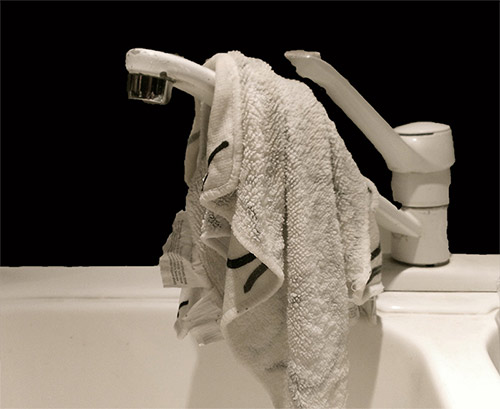The Dirtiest Thing in Your House.
A study initiated by Kimberly-Clark Corporation revealed a startling fact: 89% of kitchen dish towels were found to harbor coliform bacteria, commonly present in the digestive tracts of animals and humans. Even more concerning, 25% of these towels tested positive for E. coli, a statistic that’s quite unsettling.

The research, led by Charles Gerba, a professor in the Department of Soil, Water, and Environmental Science at the University of Arizona, highlighted that towels are often the most bacteria-ridden items in our homes.
This is largely because they come into contact with our hands, which have been used to wipe various surfaces, including countertops where raw meat is frequently placed.
Towels typically air dry on sinks or racks, a process that can take several hours, during which bacteria can proliferate. Moreover, the risk of cross-contamination is high, as we regularly touch our mouths or food after using these towels, unwittingly spreading germs to ourselves and others.
This is also true for face and bath towels, which can transmit bacteria and viruses to anyone else who uses them.
Feeling uneasy?
There’s no need to worry. By adopting a few simple habits, you can significantly reduce the spread of germs:
- Regularly Replace or Wash Towels: Change or launder your towels every three to four days.
- Use Paper Towels for Cleaning: Opt for paper towels when cleaning food preparation areas and for drying hands.
- Natural Fabric Care: Substitute fabric softener with baking soda and vinegar to eliminate odors and maintain towel absorbency.
- Avoid Fabric Softeners and Dryer Sheets: These silicone-based products can coat cotton fibers, diminishing towel absorbency.
- Bleach Solution for Towels: Bleaching is hard on towels (specifically colored towels). If frequent washing is not feasible, soak kitchen towels in a bleach solution (two teaspoons of bleach per gallon of water) before drying.
- Dishwasher for Sponges: Place yellow sponges with green scrubby surfaces in the dishwasher with each cycle.
- Bleach Spray for Sanitization: Keep a bleach and water spray bottle under the sink to sanitize surfaces after handling raw meats. Remember, bleach can wear down the spray mechanism over time, so consider reusing an old Windex bottle.
- Bathroom Mold Prevention: A similar bleach solution spray bottle in the bathroom can help prevent mold in the tub or shower.
By following these steps, you can maintain a cleaner, healthier home environment.
If you have any questions or need further guidance, feel free to reach out via EMAIL or call 786-512-3268.
You may also enjoy the following articles:
